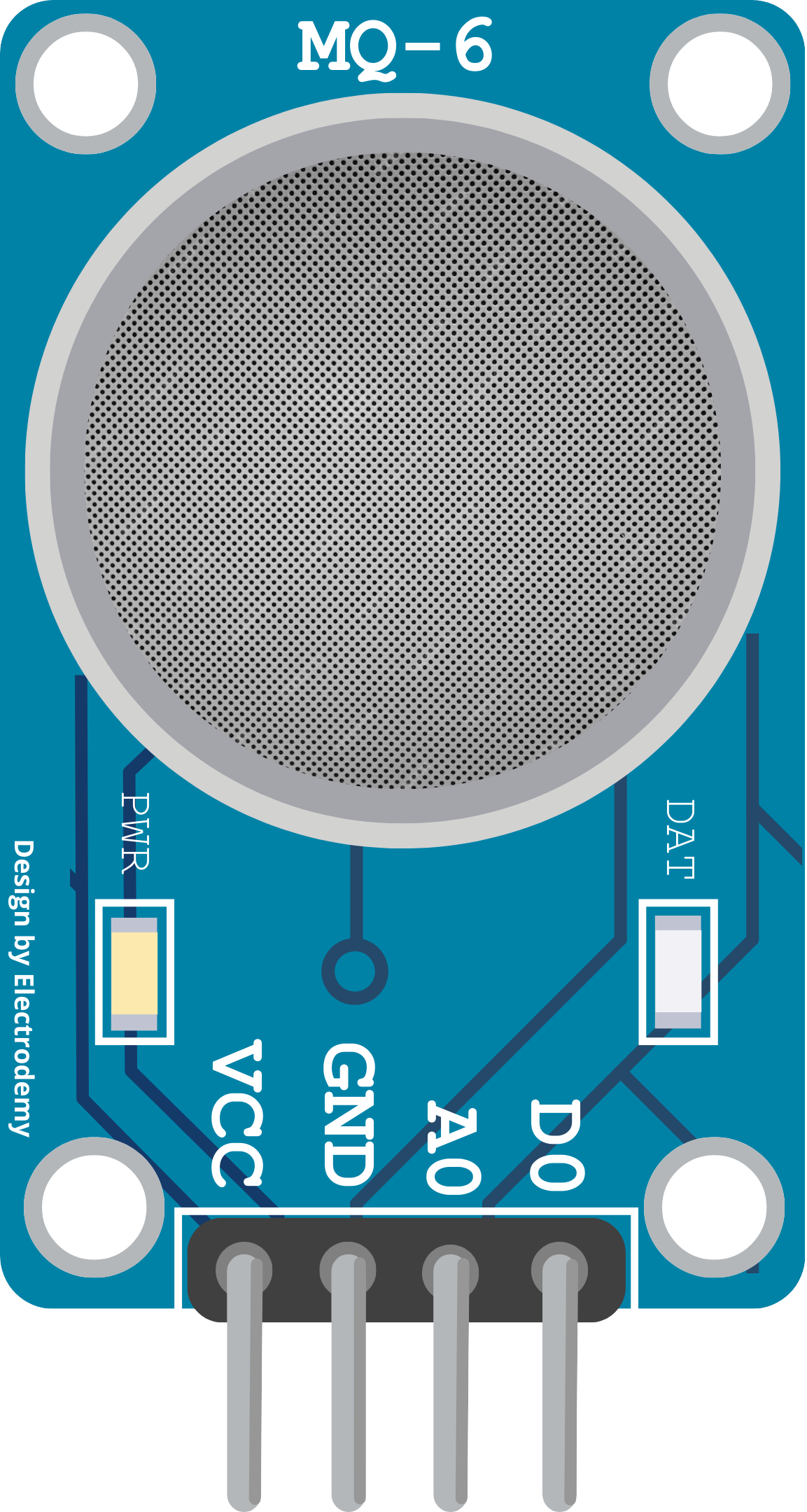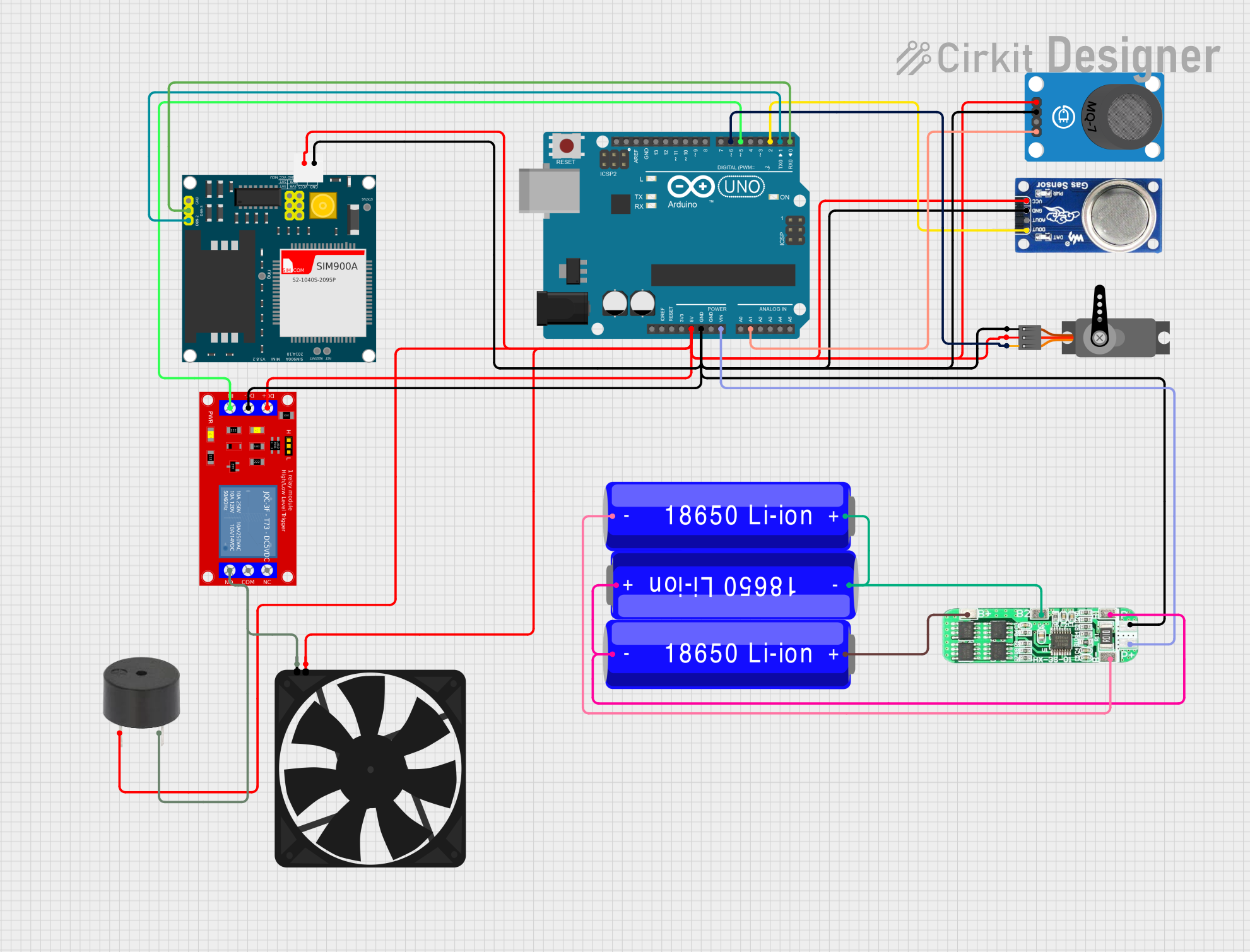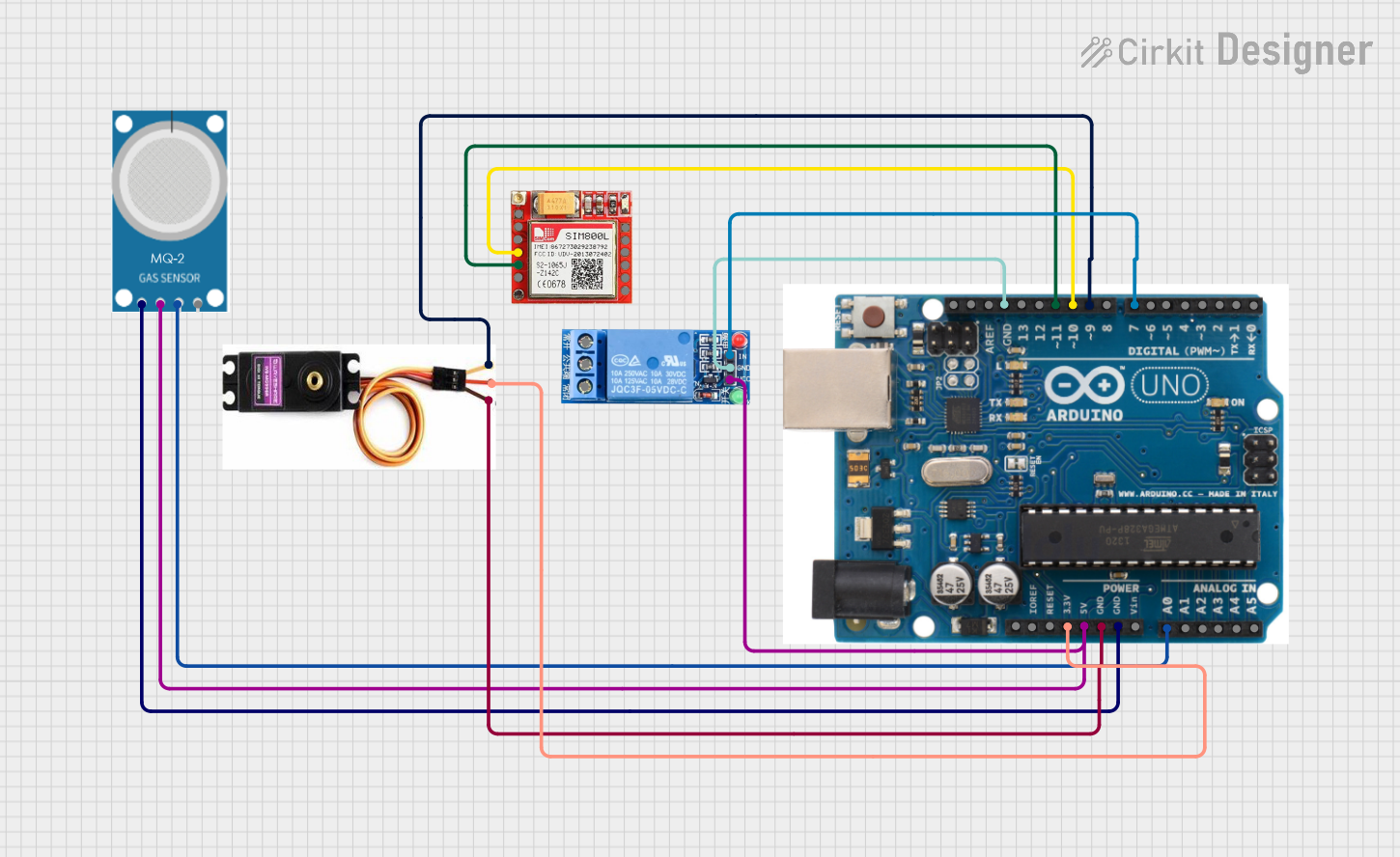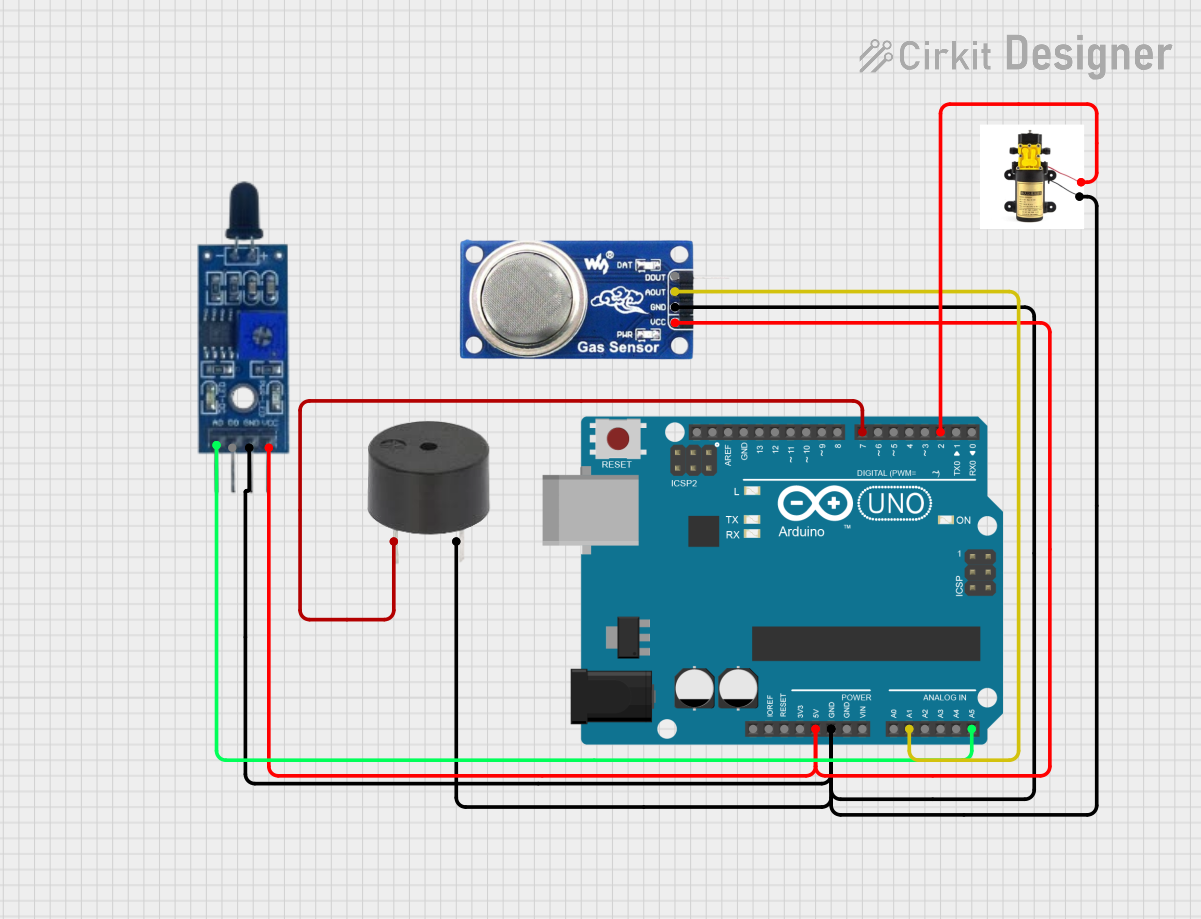
How to Use MQ-6 SENSOR LPG GAS: Examples, Pinouts, and Specs

 Design with MQ-6 SENSOR LPG GAS in Cirkit Designer
Design with MQ-6 SENSOR LPG GAS in Cirkit DesignerIntroduction
The MQ-6 sensor module is designed for the detection of LPG (liquefied petroleum gas) concentrations in the air. It is a widely used sensor for gas leak detection in household and industrial settings to prevent accidents related to gas leakage. The sensor can also detect natural gas and is suitable for creating safety alarms, gas level monitoring systems, and for integration into IoT applications for smart monitoring.
Explore Projects Built with MQ-6 SENSOR LPG GAS

 Open Project in Cirkit Designer
Open Project in Cirkit Designer
 Open Project in Cirkit Designer
Open Project in Cirkit Designer
 Open Project in Cirkit Designer
Open Project in Cirkit Designer
 Open Project in Cirkit Designer
Open Project in Cirkit DesignerExplore Projects Built with MQ-6 SENSOR LPG GAS

 Open Project in Cirkit Designer
Open Project in Cirkit Designer
 Open Project in Cirkit Designer
Open Project in Cirkit Designer
 Open Project in Cirkit Designer
Open Project in Cirkit Designer
 Open Project in Cirkit Designer
Open Project in Cirkit DesignerTechnical Specifications
Key Technical Details
- Sensor Type: Semiconductor
- Detection Gas: LPG, isobutane, propane
- Concentration Range: 200 to 10,000 ppm
- Supply Voltage (Vcc): 5V DC ±0.1V
- Output Voltage (VRL): 0.1 - (Vcc-1.5)V
- Preheat Duration: 20 seconds
- Load Resistance: Adjustable via onboard potentiometer
- Operating Temperature: -10 to 50°C
- Heater Power Consumption: Approx. 800mW
Pin Configuration and Descriptions
| Pin Number | Pin Name | Description |
|---|---|---|
| 1 | VCC | Power supply (5V DC) |
| 2 | GND | Ground |
| 3 | DOUT | Digital output (TTL logic level) |
| 4 | AOUT | Analog output (proportional to gas concentration) |
Usage Instructions
Integration into a Circuit
- Power Supply: Connect the VCC pin to a 5V power supply and the GND pin to the ground.
- Analog Output: Connect the AOUT pin to an analog input on your microcontroller to read the gas concentration levels.
- Digital Output: Connect the DOUT pin to a digital input on your microcontroller if you want to use a predefined threshold level for gas detection.
Important Considerations and Best Practices
- Calibration: The MQ-6 sensor requires calibration to ensure accurate readings. Expose the sensor to a known concentration of the target gas and adjust the onboard potentiometer until the desired output is achieved.
- Preheating: Allow the sensor to preheat for at least 20 seconds to stabilize the readings.
- Ventilation: Ensure proper ventilation around the sensor to allow gas diffusion.
- Avoid Extreme Conditions: Do not expose the sensor to extreme temperatures, humidity, or volatile organic compounds other than the target gases.
Example Code for Arduino UNO
// MQ-6 LPG Gas Sensor with Arduino UNO
int analogPin = A0; // Analog input pin connected to AOUT on the sensor
int digitalPin = 2; // Digital input pin connected to DOUT on the sensor
int sensorValue = 0; // Variable to store the sensor value
void setup() {
pinMode(digitalPin, INPUT); // Set the digital pin as input
Serial.begin(9600); // Start serial communication at 9600 baud rate
}
void loop() {
sensorValue = analogRead(analogPin); // Read the analog value from sensor
Serial.print("Gas concentration (analog): ");
Serial.println(sensorValue); // Print the analog reading
if (digitalRead(digitalPin) == HIGH) {
// Check if the digital pin is HIGH
Serial.println("Gas detected!");
} else {
Serial.println("No gas detected.");
}
delay(1000); // Wait for 1 second before reading again
}
Troubleshooting and FAQs
Common Issues
- Inaccurate Readings: If the sensor provides inconsistent or inaccurate readings, ensure that it has been properly calibrated and that there is no interference from other chemicals or extreme environmental conditions.
- No Response: If the sensor does not respond, check the power supply and connections to ensure that the sensor is properly powered and that all pins are correctly connected.
Solutions and Tips
- Calibration: Perform calibration in an environment with a known concentration of LPG for accurate results.
- Sensor Life: The MQ-6 sensor has a limited lifespan. Replace the sensor if it has been in use for an extended period or if it has been exposed to high concentrations of gas frequently.
FAQs
Q: Can the MQ-6 sensor detect gases other than LPG? A: Yes, the MQ-6 can also detect gases like propane and butane, which are components of natural gas.
Q: How do I know if the sensor is working correctly? A: You can test the sensor by applying a known concentration of LPG and observing the output. If the readings are within the expected range, the sensor is functioning correctly.
Q: What is the purpose of the onboard potentiometer? A: The potentiometer is used to adjust the load resistance and calibrate the sensor's sensitivity to the target gas concentration.